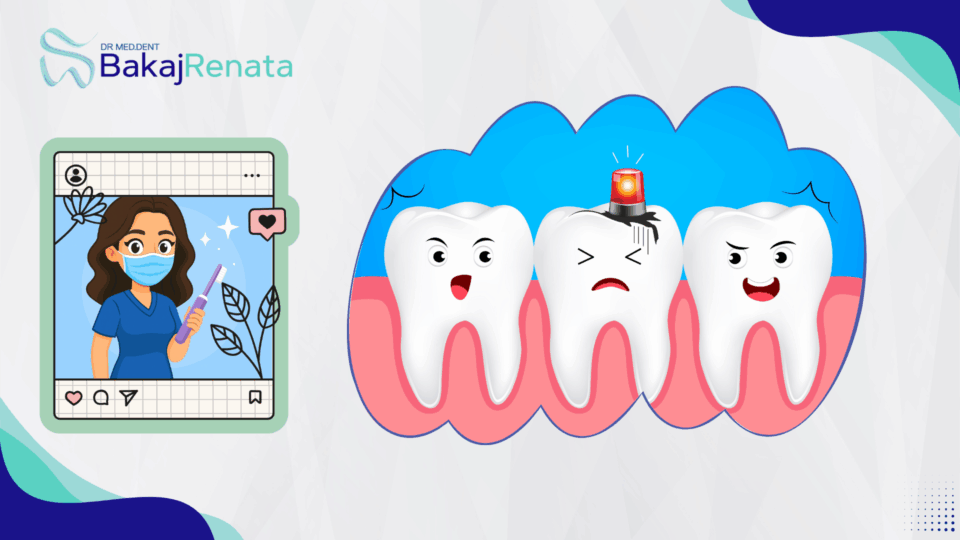Pre-Prosthetic Orthodontics in Lugano: Why It’s Essential Before a Crown or Implant

A successful prosthetic restoration begins well before the crown or implant.
For adult patients, pre-prosthetic orthodontics prepares the teeth and arches to receive restorations that are stable, functional, and aesthetic.
In Lugano, where the demand for conservative, high-precision solutions continues to grow, the integration of orthodontics, prosthetics, and implantology makes it possible to reduce unnecessary tooth reduction, improve hygiene, and extend the lifespan of restorative treatments.
What Is Pre-Prosthetic Orthodontics?
Pre-prosthetic orthodontics involves targeted tooth movements designed to create ideal conditions for prosthetic rehabilitation.
It can include aligning, uprighting, selective intrusion or extrusion, space recovery after tooth loss, and correction of root inclinations or traumatic contacts.
The goals are twofold:
-
To provide the prosthodontist or implantologist with correct foundations (axes, spaces, thickness, and emergence profiles) to work on.
-
To restore proper function, hygiene, and esthetics that are easy to maintain over time.
When Is It Indicated (Typical Signs in Adult Patients)
-
Dental crowding or rotations that would require significant tooth reduction for a crown.
-
Loss of implant space after years without a tooth, with adjacent teeth tipping into the gap.
-
Molar inclination (tipping) that obstructs prosthetic alignment.
-
Extrusion of an opposing tooth into an edentulous space (overeruption), reducing prosthetic height.
-
Deep bite or occlusal dysfunctions that would destabilize restorations.
-
Periodontal compromise with tilted roots and occlusal trauma on reduced bone support.
In all these cases, small, controlled tooth movements enable more conservative and predictable rehabilitations.
Clinical and Functional Benefits
-
Reduced or avoided tooth reduction → aligning and uprighting preserves natural enamel and dentin.
-
Proper spacing for implants → ideal root angulation and interradicular distance for natural emergence profiles.
-
Stable occlusal contacts → improved load distribution, reduced fracture risk.
-
Simplified hygiene → aligned teeth are easier to clean, ensuring longer-lasting restorations and implants.
-
Improved smile aesthetics → harmonious occlusal planes and balanced buccal corridors.
The Pre-Prosthetic Process in Lugano: From Diagnosis to Restoration
1️⃣ Clinical and Digital Evaluation
Comprehensive examination including anamnesis, occlusal and functional analysis, photos, 3D intraoral scans, and radiographs.
Digital setup allows simulation of necessary movements and pre-visualization of spaces, axes, and volumes for crowns or implants.
2️⃣ Interdisciplinary Planning
The orthodontist collaborates with the prosthodontist/implantologist (and periodontist if needed) to define:
-
Required dental movements (uprighting, intrusion, expansion, distalization).
-
Timing and sequence of treatment phases.
-
Possible use of temporary anchorage devices (TADs) for stability.
-
Prosthetic objectives: crown design, ceramic thickness, implant emergence, and final esthetics.
3️⃣ Active Orthodontic Phase
Depending on the case, clear aligners or fixed appliances (sometimes in hybrid combination) are used.
Goals include:
-
Recovering lost edentulous space in a controlled manner.
-
Uprighting molars to provide vertical prosthetic support.
-
Intruding or extruding teeth selectively to restore occlusal planes and prosthetic dimensions.
4️⃣ Check-Ups and Refinement
Follow-up every 4–8 weeks to monitor progress, hygiene, and periodontal stability.
Minor refinements are made to ensure ideal prosthetic parameters.
5️⃣ Prosthetic Rehabilitation
Once objectives are achieved, crowns, bridges, or implants are placed with greater conservation and integration.
Aligners or Fixed Braces — Which Works Best for Pre-Prosthetic Cases?
-
Clear Aligners:
Excellent for mild to moderate tooth movements such as alignment, minor uprighting, and light intrusion.
Ideal for adult patients seeking aesthetics and easier hygiene, especially during provisional restorations. -
Fixed Braces:
Preferred for more complex root movements, major rotations, or when full 3D control is required. -
Hybrid Approach:
Sometimes a short fixed-brace phase is used for difficult movements, followed by aligners for finishing and esthetics.
The choice depends on the type of tooth movement required, aesthetic priorities, biological factors, and overall treatment goals.
Can It Be Done in Patients with Periodontitis?
Yes — with proper precautions.
It requires strict inflammation control, professional hygiene sessions, light orthodontic forces, and careful monitoring of periodontal pockets.
Collaboration with the periodontist is essential to avoid trauma on reduced bone support.
In many cases, pre-prosthetic orthodontics improves load distribution, facilitates cleaning, and enhances the prognosis of remaining teeth before restoration.
Treatment Duration and Prosthetic Timing
Treatment duration is personalized — from a few months to about a year (or slightly more) in complex cases.
Often, the orthodontic phase is coordinated with provisional restorations or mock-ups to verify function and esthetics during treatment.
Proper planning minimizes downtime and helps synchronize implant placement with orthodontic goals.
Why It’s a More Conservative (and Often More Cost-Effective) Choice
-
Preserves dental tissue: minimal tooth reduction, reduced endodontic risk.
-
Improves prosthetic precision: crowns align correctly, with optimal ceramic thickness and accessible margins.
-
Guided implant placement: implants positioned prosthetically, ensuring natural emergence and healthy soft tissue.
-
Fewer complications = longer-lasting restorations.
In Lugano, where patients increasingly seek high-level aesthetic and conservative solutions, this “orthodontics first” philosophy leads to more predictable, sustainable, and maintainable results.
Quick FAQ
Is orthodontic treatment always necessary before a crown or implant?
👉 No, only when tooth alignment, space, or contact points are not ideal. However, it often simplifies prosthetic work and improves longevity.
Are clear aligners enough for pre-prosthetic cases?
👉 Often yes, but complex movements (major rotations or root torque) may require a fixed or hybrid approach.
Can patients with periodontitis undergo orthodontic treatment?
👉 Yes, with inflammation control, light forces, and interdisciplinary monitoring. It can even improve long-term outcomes.
Building the Foundation for Lasting Restorations
Pre-prosthetic orthodontics for adults creates the optimal conditions for crowns, bridges, and implants that are more conservative, stable, and aesthetic.
Accurate diagnosis, 3D digital support, and interdisciplinary planning are the keys to turning complex restorations into predictable, long-term results.
In Lugano, this clinical synergy enables the creation of beautiful, functional smiles — not just for today, but for years to come.